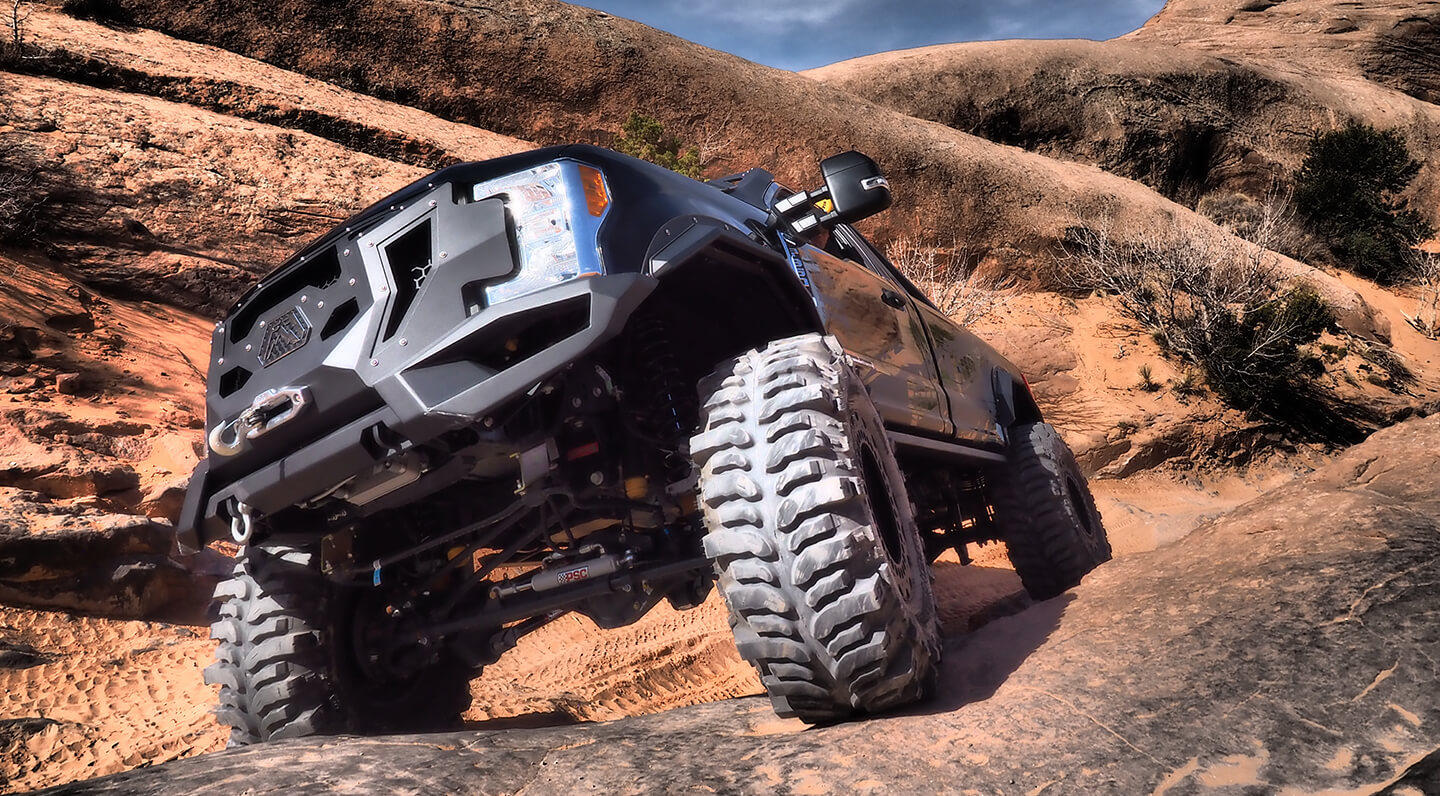
In most cases, the axle upgrades required will be primarily dictated by tire size, but your driving habits and budget also come into play. Fortunately, there is an abundance of aftermarket parts available for all of the common axle assemblies found under popular 4x4s. There are also driving techniques you can use to help your axles live longer lives. Read on for more info about axle assembly survivability and what will work for you.
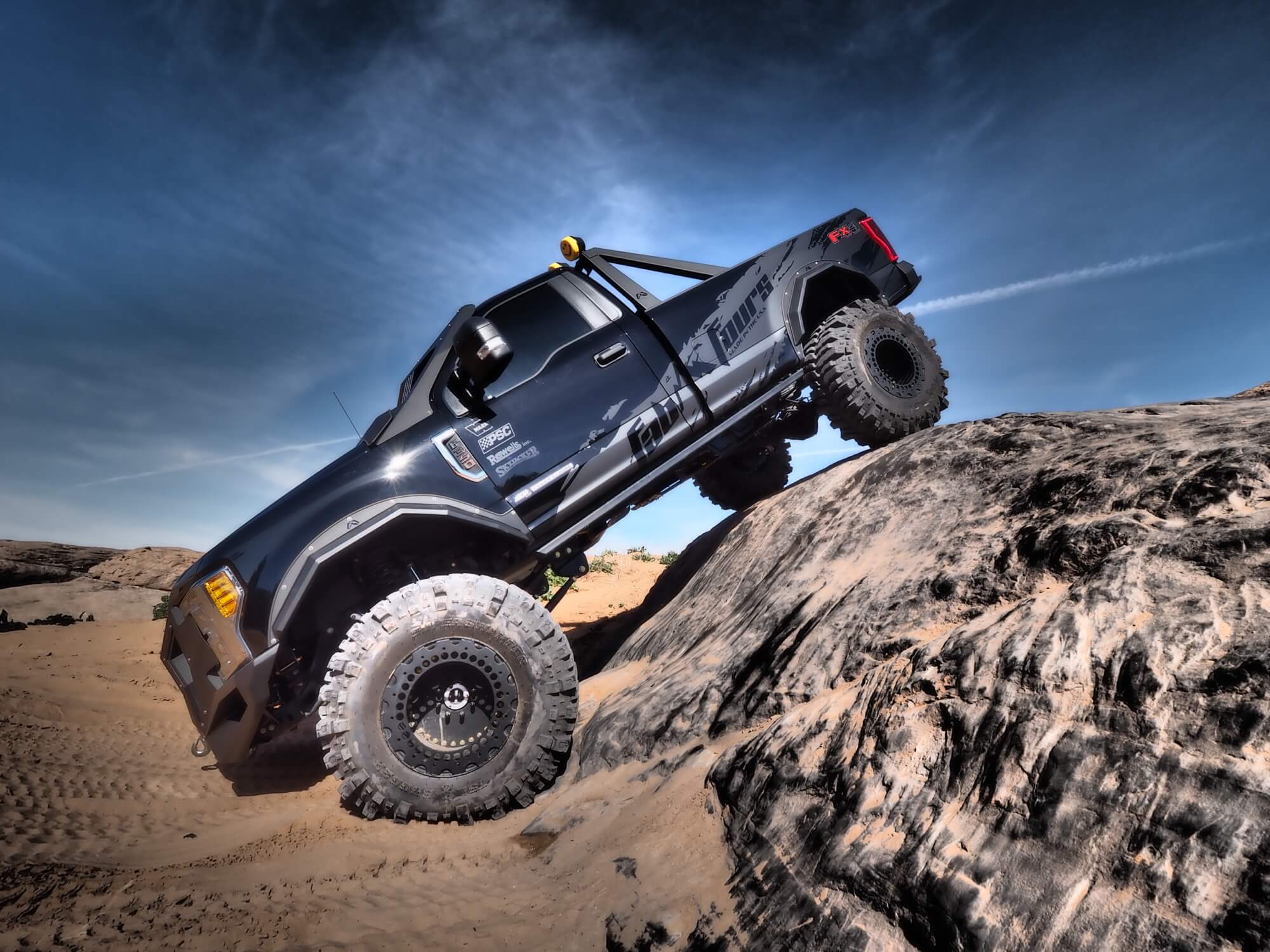
Be prepared to make some axle upgrades if you are going to run bigger tires in the dirt or even on the street. If you are running bigger tires and drive like an idiot, be prepared to break your axles and your wallet.
Bigger Is Not Always Better
Those that actually hit the trail usually want to add bigger tires to increase ground clearance, while mall crawlers just like the look of more aggressive, larger tires. Both groups can benefit from axle upgrades. Basic physics come into play when adding bigger tires to a 4×4. Larger diameter tires and wheels are significantly heavier than the stock wheels and tires. They also have more leverage to increase wear and cause damage to drivetrain components upstream, most notably the axle internals. Large diameter tires also create increased side loading leverage even when driving on the street, which can lead to premature wheel bearing and ball joint wear. Most 1/2-ton and smaller 4x4s can handle one to two steps up in tire size without issues. For example, if your 4×4 came with 32-inch-diameter tires from the factory, you can usually successfully run up to a 35-inch tire on the stock axle assemblies in most cases. Axle assemblies with independent suspension and rack and pinion steering systems are typically less durable and more susceptible to damage caused by larger tires than their solid axle counterparts. The solid axle assemblies found under most 3/4- and 1-ton trucks can usually handle 37- to 40-inch tires in stock form.
Don’t Drive It Like You Stole It
The factory axle assemblies under most 4x4s were never designed to handle excessively large tires, much less big tires with an overly aggressive driver. This combination is sure to be rewarded with broken metal shards in your axle assemblies where the gears and axle shafts used to be. The fundamental truth is that you can break anything if you try hard enough. The trick is knowing when to hammer the throttle and when not to. Similar to threshold braking, threshold throttle use will allow you to keep your forward momentum without losing traction and keep you out of the shop on Monday. Most axle failures are a result of binding or one of the tires providing more traction than the others. Throttling a 4×4 while it’s hopping and bouncing on a ledge or hill climb is a surefire way to end up with broken truck parts in the dirt. Driving elegantly over obstacles will preserve your axles. Avoid steering all the way to the right or left and hammering the throttle. Front axle shaft assemblies are generally much stronger when the wheels are pointing straight ahead.
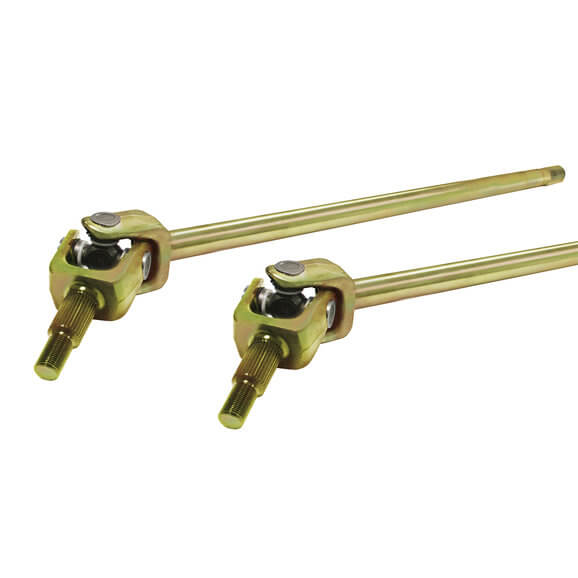
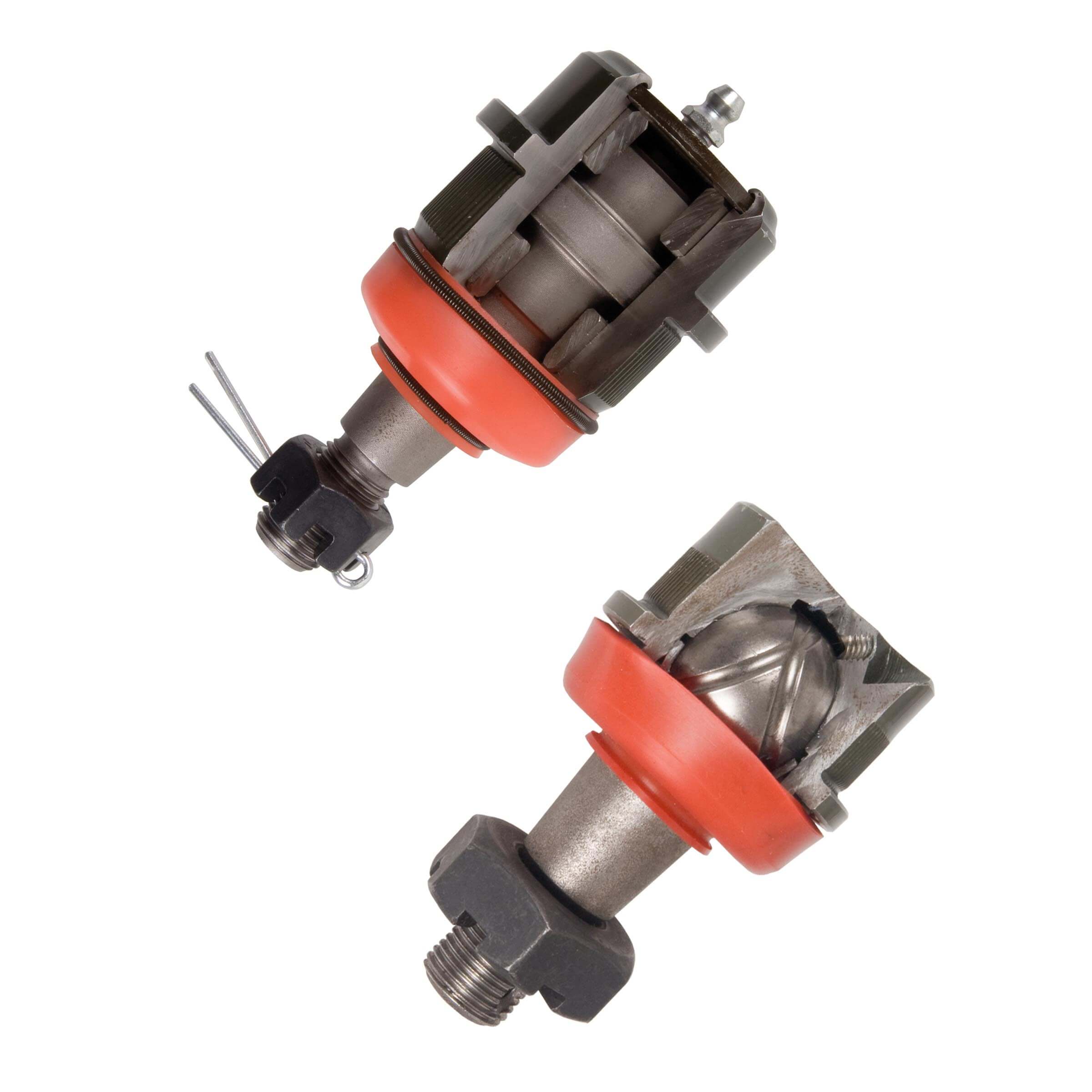
Ball joints are often overlooked and left alone until they fail. Lighter duty axles, such as the Dana 30 found in the front of the Jeep Wrangler, have ball joints that usually fail when running bigger tires. Make sure to upgrade them as bad ball joints can lead to lots of issues.
Upgrade Your Joints
The factory steering U-joints in a solid front axle assembly are typically the weak link up front. Of course, the factory steering U-joints available from companies like Spicer are far stronger than some of the low-cost imported part-store steering U-joints. It’s never a good idea to skimp on these joints. If they fail on the trail, it’s not at all uncommon for them to take out other components at the same time, such as the axle shafts and ball joints. The collateral damage of an unchecked broken steering U-joint can lead to loss of steering, and in extreme worst case scenarios, a broken steering U-joint can cause the wheel, knuckle, and brake assembly to blow off the frontend. Fortunately, several aftermarket companies offer upgraded steering U-joints made from stronger materials like chromoly and 300M. However, it generally does not make sense to put these heavy-duty steering U-joints in stock axle shafts. The heavy-duty aftermarket joints are far stronger than the OE axle shafts. The ears and bores of the axle shafts will deform and eventually fail before the heavy-duty aftermarket joint even flinches. So if you plan to add aftermarket steering U-joints, you’ll also want to spring for some heavy-duty front axle shafts at the same time.
Getting The Shaft
Most factory axle shafts are made from medium-carbon steel. The carbon increases strength but makes the steel less ductile. These steels include 1040 and 1050 among others. Aftermarket alloy shafts are often made from 1541 steel. This material has an even higher carbon content than the factory axle shafts. Other metals, such as chromium, molybdenum, and nickel are also added to the mix. The next step up is 4340 chromoly. This material is about twice as strong as the 1040 steel found in OE axle shafts when properly heat treated. It’s also ductile enough to absorb sudden shock loads, which protects the differential. The 4340 chromoly is popular for performance-aftermarket front shafts because it is durable and more affordable than some of the more exotic alloys. Beyond 4340 chromoly is 300M, which is also known as 4340M. The 300M is similar to 4340 but vanadium, additional silicon, and slightly more carbon and manganese are added as well. A properly through-hardened 300M axle shaft is about 220 percent stronger than a factory 1040 steel axle shaft. The downside is that 300M is expensive, harder to machine than other materials, and manufactured in much lower quantities than the different grades of axle shaft steel.
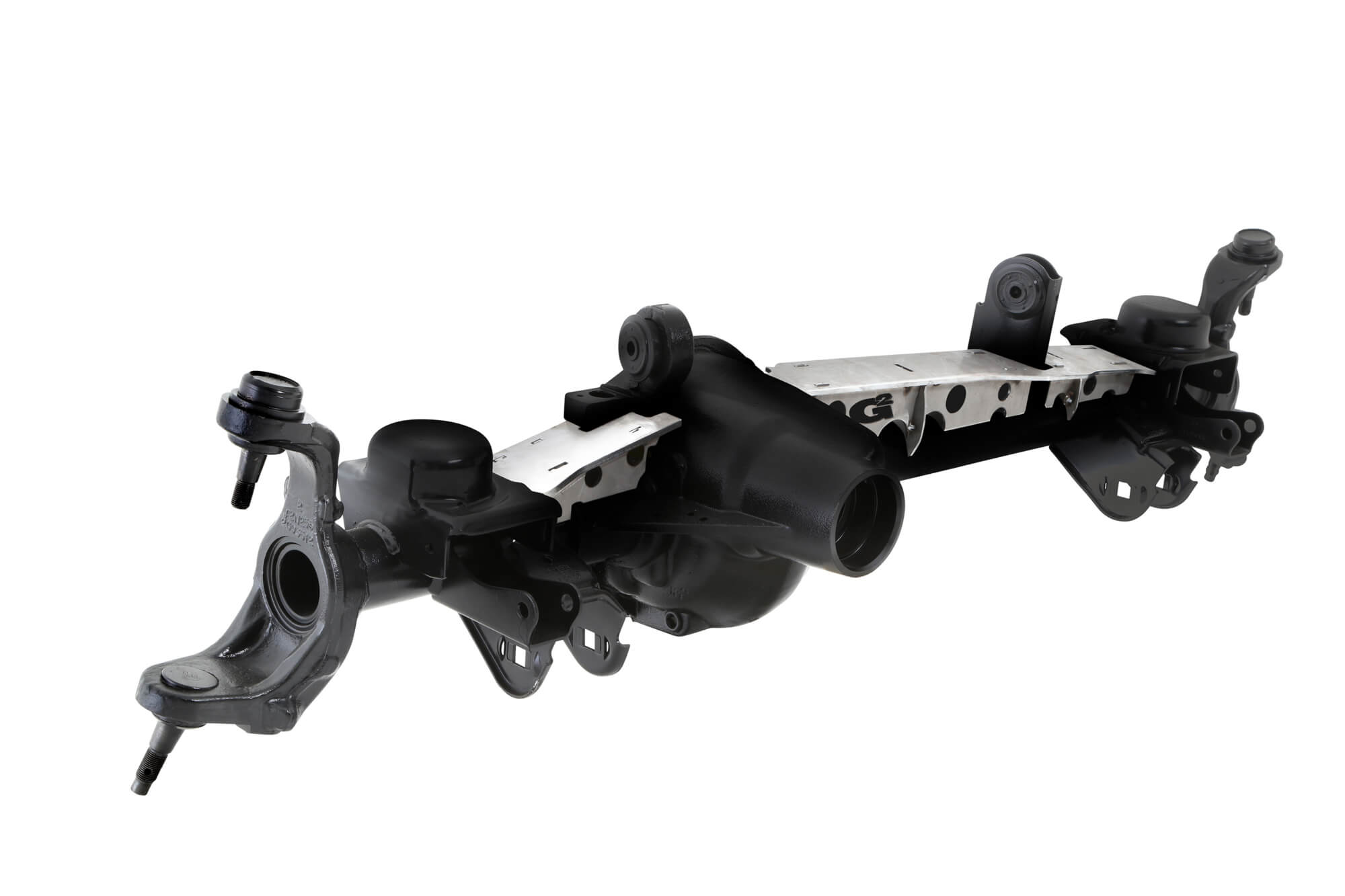
Trust In Truss?
Weld-on and bolt-on axle sleeves and trusses offer around a 30 percent increase in housing strength. However, they have to be correctly installed on an axle housing that isn’t bent. If the housing is already bent, these components will do nothing to straighten the housing. The housing will need to be replaced if it is tweaked. Aftermarket heavy-duty bolt-in replacement axle housings feature beefier cast center sections and larger diameter axle tubes.
In some cases, such as on the Jeep Wrangler, they accept the internal components from your OE axle. Many of the all-new aftermarket axle housings are more than 200 percent stronger than stock and are generally a much better option than weld-on trusses if you are searching for ultimate axle housing strength. Axle trusses and sleeves can be a relatively inexpensive option to beef up a bend-prone housing. However, if you don’t know how to weld make sure to check how much installation will be as the labor involved can quickly surpass the cost of the truss.
Knuckles And Joints
In most stock applications, the factory steering knuckles perform the task of supporting the wheels and steering the 4×4 without issue. However, some steering knuckles have inherent weaknesses that surface when combined with larger than stock tires and abusive off-road use. Many aftermarket steering knuckles offer improved ground clearance for the tie rod and better steering geometry for the draglink. Beefier aftermarket steering knuckles are much better at supporting high-steer arms and ram-assist steering systems. They typically feature extra steering arm bolts and thicker castings in critical areas, which makes them less failure prone than the stock components.
Some factory ball joints feature plastic races, which cannot manage the added leverage of larger diameter tires. It’s not uncommon to see the OE ball joints go bad in 10,000-15,000 miles on vehicles with larger tires. Heavy-duty ball joints are available for many popular applications. They merely replace the originals but feature higher quality materials that can withstand the rigors of larger tires and off-road use.
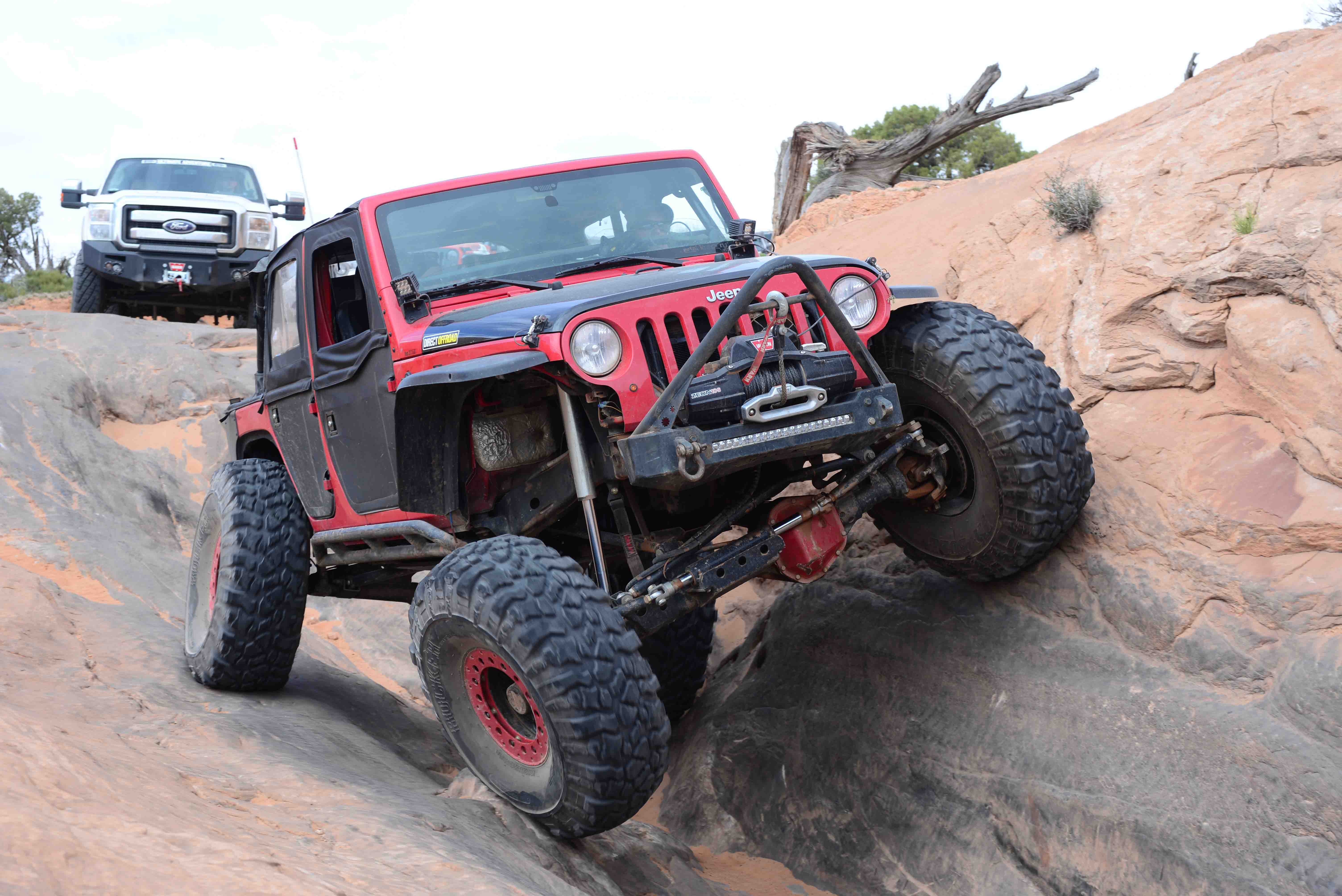
Junkyard axle swaps might seem attractive at first, but remember that you will have to correctly weld all the suspension and steering brackets onto the axle. Axles sourced from the junkyard might also need new brakes, ball joints, gears, lockers, etc. If you don’t know how to do any of this, the costs can quickly add up.
Swap Your Way To Success
Aftermarket axle trusses, heavy-duty ball joints, replacement axle housings, and specialty axle shafts made from chromoly or 300M materials can solve individual axle issues. However, these parts can only go so far when your tire size and driving habits exceed the overall strength of the factory axle assemblies. Stacking all of these parts on the same axle assembly becomes a less effective option than a complete axle upgrade. Even with every imaginable aftermarket part slapped onto your stock axles, you will eventually reach the limits of the factory axle assembly and find the next weak link, which will likely be the cast center section, ring and pinion, or another part that is not easily repaired or replaced on the trail.
If you plan to bump up three or more tire sizes and drive in extreme off-road areas, you’ll likely want just to save your money and swap out the stock axle assemblies for something stronger. Many different aftermarket heavy-duty bolt-in axle assemblies are available off the shelf, and less popular applications can be custom made. These heavy-duty axle assemblies feature larger ring and pinion gears and axle shafts, more robust center sections, beefier axle tubes, bigger brakes, ball joints and wheel bearings, and offer more load carrying capacity than the stock components. They are not cheap but become more attractive when you add up throwing every part imaginable at your existing axle and still dealing with busted parts.
Junkyard Axle Swaps
When you have gone beyond the limits of the factory axle assembly and the upgrades that the aftermarket has to offer, the natural solution is an axle swap. Many people incorrectly believe that a stronger junkyard axle can be quickly and easily bolted up to their 4×4. There are very few easy bolt-in junkyard axle swaps. Almost all axle junkyard axle swaps will require cutting, welding, fabrication, and experience with suspension, steering, and driveshaft geometry. Also, keep in mind that most junkyard axles will have many thousands of miles on them. The internals, seals, brakes, and more will all be due for a rebuild, negating much of the savings of using a junkyard axle assembly for your swap. Other considerations are non-matching widths, gear ratios, lug patterns, right or left drop front differential, inability to retain ABS and other sensors, and more. It’s usually best to thoroughly crunch the numbers of a properly rebuilt and adapted junkyard axle before taking the plunge. In many cases, you’ll spend more time and money trying to make a junkyard axle fit your 4×4 than if you were to start with an all-new heavy-duty, bolt-in, aftermarket axle assembly.

Brand-New Axles
All-new aftermarket axle assemblies are designed to be a bolt-in swap for your 4×4. The suspension brackets are correctly located and fully welded to allow for correct fitment, suspension and steering geometry, and driveshaft angles. The hard part is done for you. In many cases, these axles can be bolted directly into your 4×4 without any other modifications. All of the gears, axle shafts, seals, brakes, and more are brand new. If you are working with a more modern 4×4, the new parts make sense. Why bolt 30-year old components and technology under a new 4×4? Complete aftermarket axles also have other improvements over a wrecking yard axle. Most all-new axles feature higher quality materials and standard off-road friendly improvements such as your choice of gear ratio, locking differentials, beefier axle housings, stronger heavy-duty axle shafts, and thicker suspension brackets, all of which are better able to withstand larger than stock tires and trail use.
Being Compatible
The compatibility of your axle swap will depend on several factors, including what other modifications have been made to the 4×4. If you stick within the same axle family, you generally will not need new driveshafts. However, upgrading to larger axle may require driveshaft modifications, such as when swapping a Dana 60 in place of a Dana 30 or 44. Some mid-duty aftermarket axle assemblies give you the ability to reuse your outer knuckles, unit bearings, and brake assemblies, which will decrease swap costs and guarantee that the brakes and ABS sensors remain compatible with the factory systems found in your 4×4. Heavy-duty bolt-in axle assemblies typically include the proper sensors and fittings to ensure that the brakes and ABS function correctly, although they usually require 8-lug wheels. This means that a heavy-duty axle swap may need a wheel upgrade too. No wheel adapters are available to allow light-duty wheels to fit the larger 8-lug bolt pattern.



2